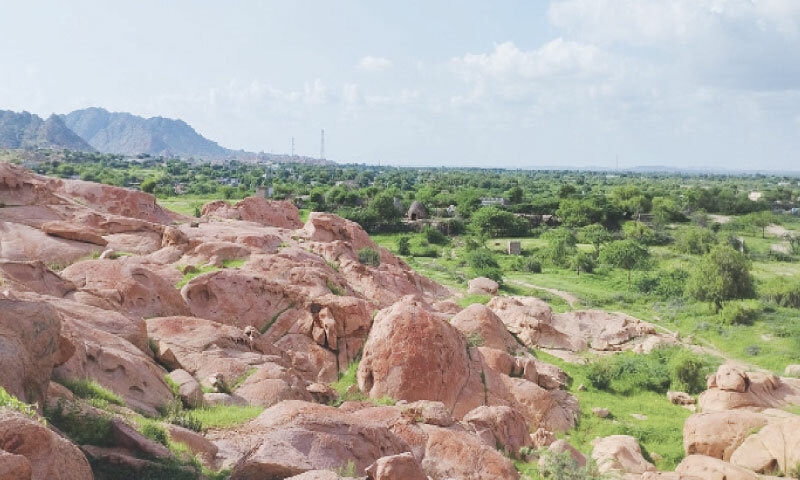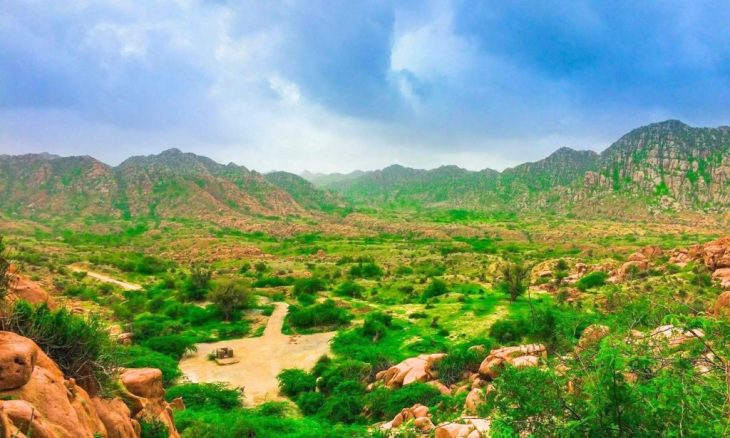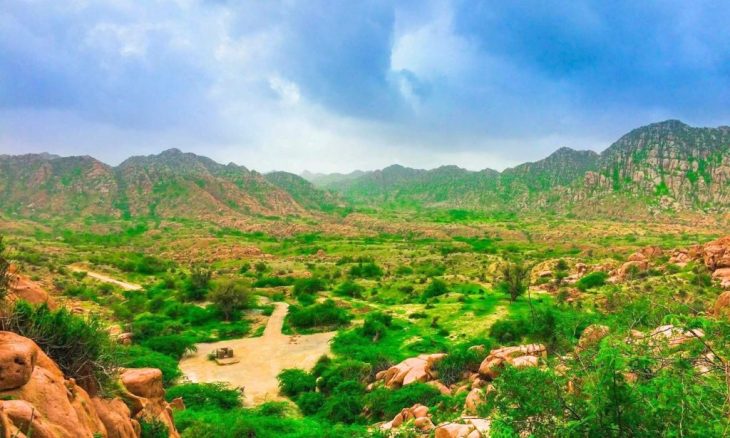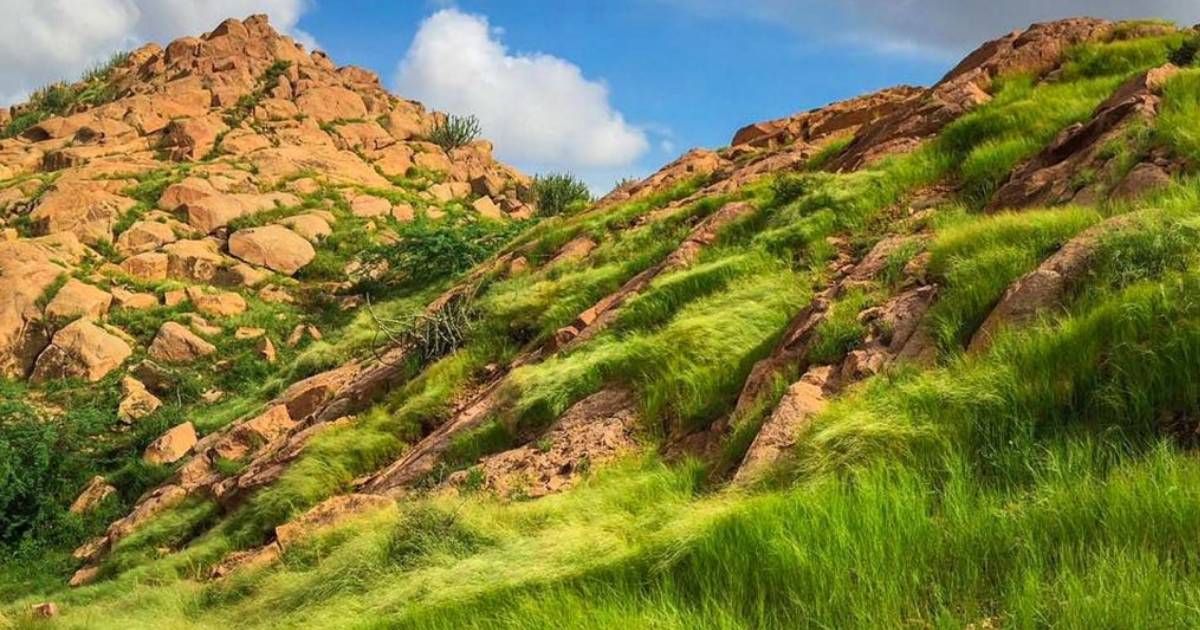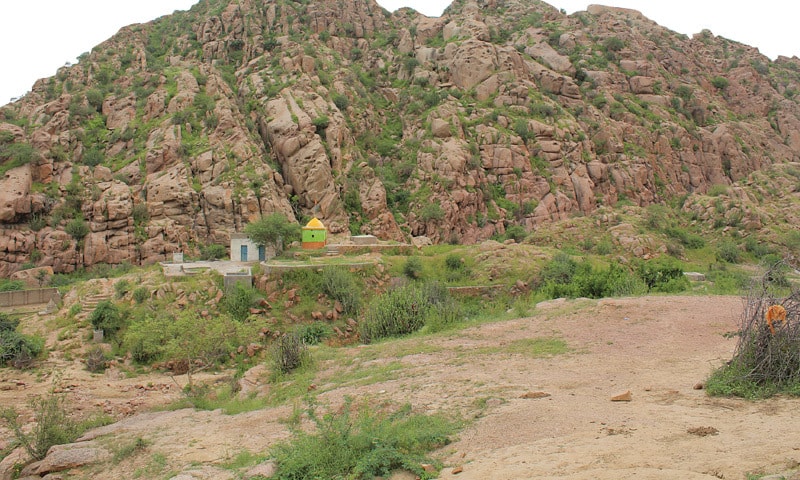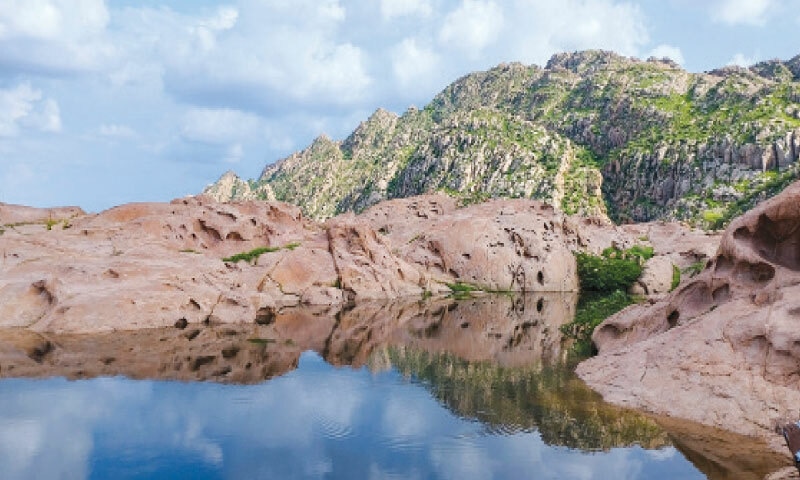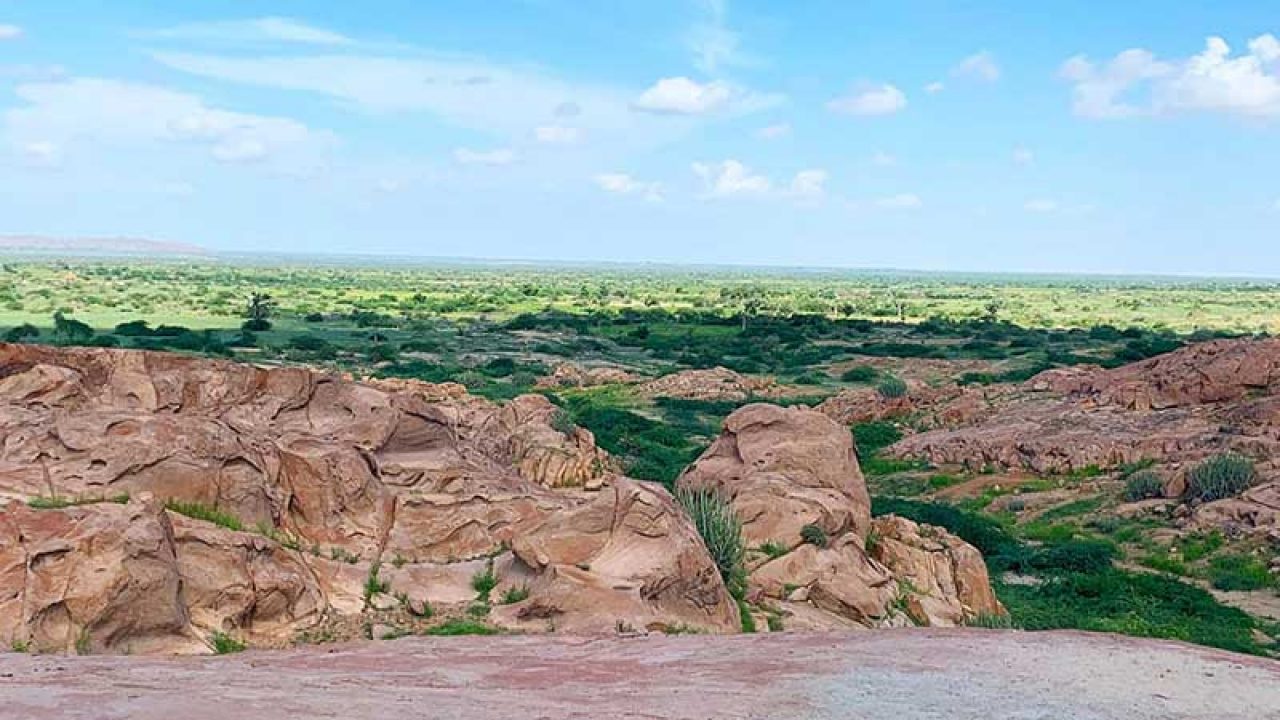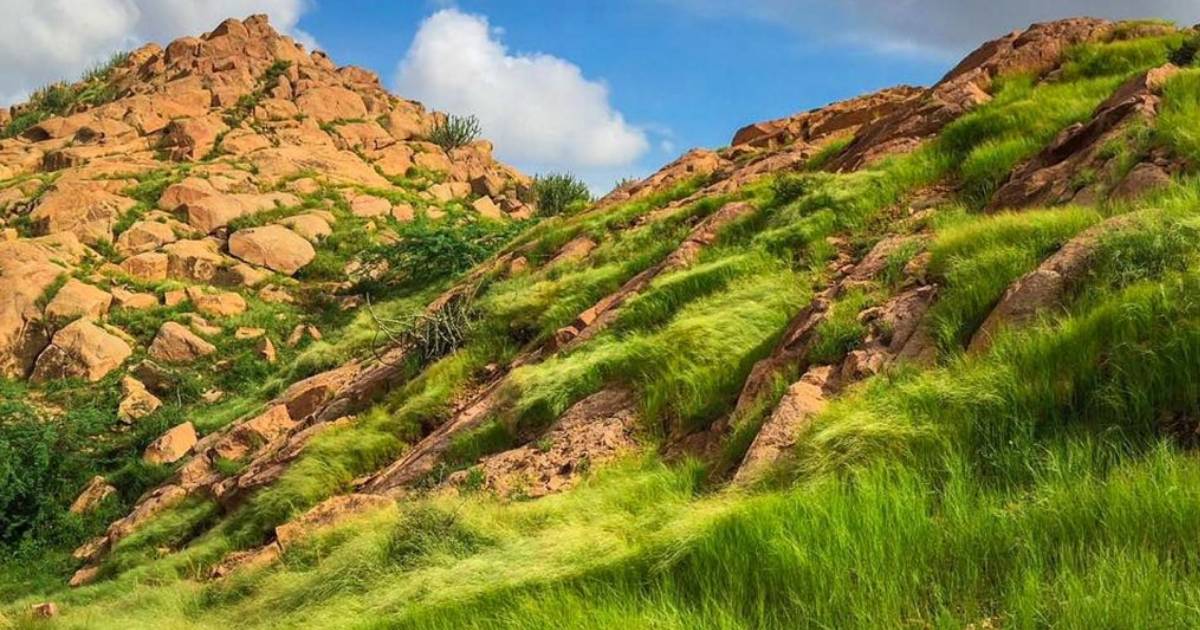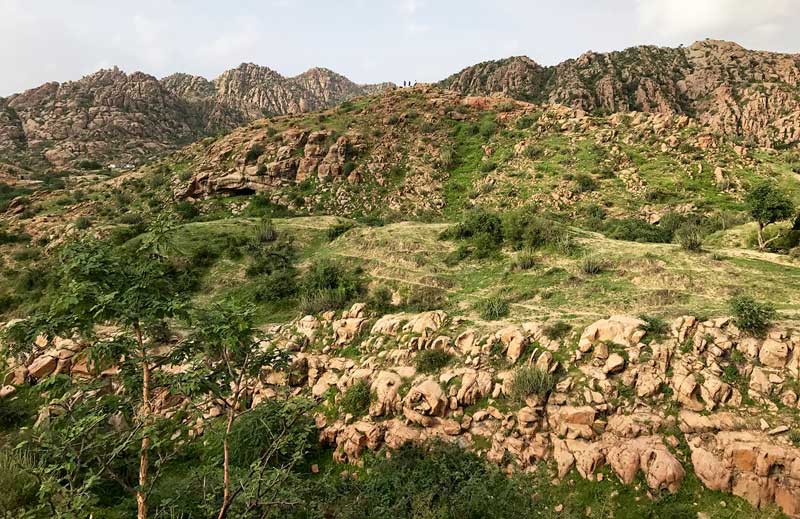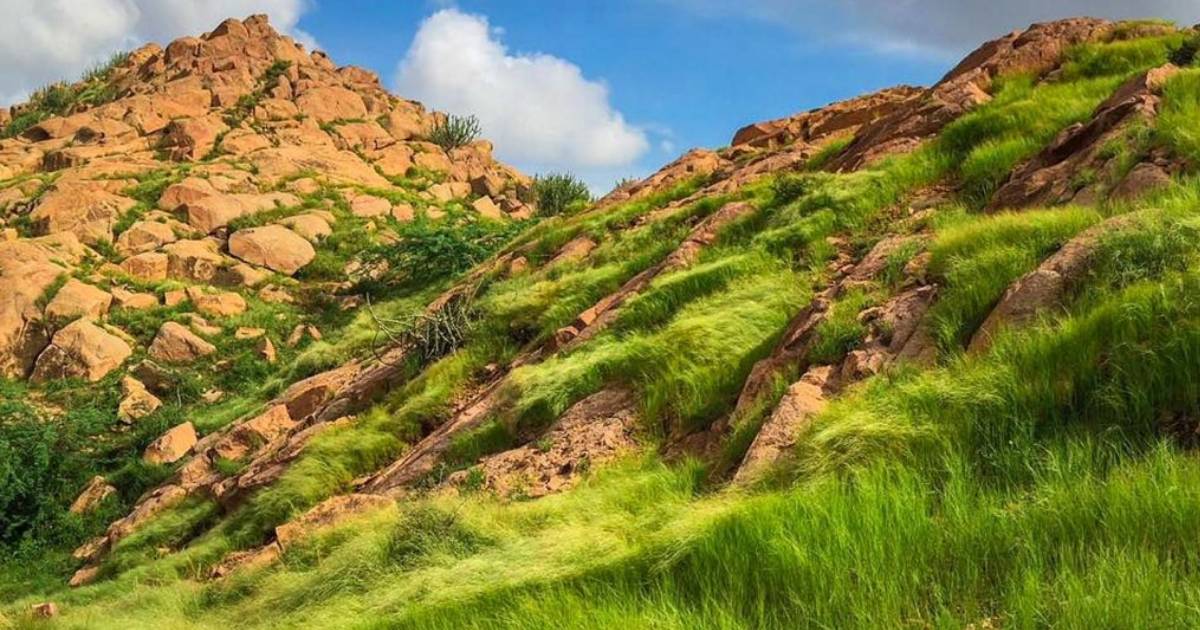
About the Karoonjhar Mountain
The Granite Heart of Sindh
The Karoonjhar Mountains, located in the Nagarparkar region of Tharparkar District in Sindh, Pakistan, are a natural and cultural marvel, offering a unique blend of ancient geology, sacred heritage, and ecological diversity. These granite hills, standing at the edge of the Great Rann of Kutch, have long been revered not just for their scenic beauty, but also for their spiritual and historical significance.
Spanning about 19 kilometers in length and reaching heights of approximately 305 meters (1,000 feet), the Karoonjhar range is small in scale but vast in meaning. It is a symbol of resilience and reverence, etched in the myths of Sindhi folklore, the scriptures of Jain and Hindu traditions, and the memory of anti-colonial resistance. Yet, despite its profound significance, this ancient mountain range remains one of Pakistan’s most underexplored and underappreciated treasures.
Geological Significance
The Karoonjhar Mountains are part of the Aravalli Range, one of the oldest mountain ranges in the world. The granite that composes these hills is estimated to be over 3.5 to 5 billion years old, placing it among the oldest rocks found on Earth. These formations speak of a time before the continents took their present shape, when Earth's crust was still cooling.
The range is primarily composed of hard granite rock that stands out starkly from the surrounding flat, sandy Thar desert. During the monsoon season, small streams such as Bhetiani, Gordhro, and Sardharo emerge from the mountains, feeding the sparse vegetation and sustaining both human and animal life. These seasonal water sources have been vital for the communities living in the harsh desert climate of Tharparkar.
Cultural and Historical Importance
The Karoonjhar Mountains are steeped in spiritual heritage and ancient history. The name “Karoonjhar” is believed to come from the Sindhi words “Karoon” (black) and “Jhar” (dots or streaks), referring to the black granite spots on the mountains.
This range is home to numerous Jain and Hindu temples, many of which are centuries old. The Bhodesar Jain Temples, located near the base of the mountains, are some of the most remarkable remnants of Jain architecture in South Asia. These temples feature intricately carved stone domes, pillars, and facades—evidence of a time when Nagarparkar was a thriving center of Jain culture and trade.
The mountains also play a significant role in Sindhi folklore. Local tales often mention mystical figures and spiritual hermits residing in the hills. One such legendary story is that of Rooplo Kolhi, a local hero and freedom fighter who resisted British colonial forces using the Karoonjhar region as a hideout. Today, his legacy is honored by naming a local resort after him, and he remains a symbol of bravery in Sindhi culture.
Religious Significance
For followers of Jainism and Hinduism, Karoonjhar is a sacred place. Devotees from different parts of Pakistan and even India visit the mountains during religious festivals, especially during Navratri, to worship at shrines like the Anchlasar Temple and the Sardharo Temple.
These spiritual spots are often located near natural springs or caves, further enhancing their mystical appeal. The peaceful environment, surrounded by the silent stones of time, gives the area a meditative and sacred quality that devotees and tourists alike find spiritually uplifting.
Ecological Diversity
Though located in a desert zone, the Karoonjhar Mountains possess surprising ecological richness. More than 89 species of plants from 26 different families have been recorded in the region. These include various medicinal herbs like shatavari, wild onion, and sanaf, which are still used in traditional remedies by the local population.
The range also supports a variety of wildlife. While large predators like leopards, cheetahs, and lions are no longer found here, animals like Indian gazelles (chinkara), desert foxes, jackals, and hares still roam the region. Bird species, including peacocks and partridges, also add to the natural vibrancy of the area.
Given its biodiversity and the presence of rare medicinal plants, Karoonjhar has long been of interest to both botanists and conservationists.
Tourism Potential
In recent years, Karoonjhar has begun to attract attention for its tourism potential. Its combination of historical ruins, spiritual sites, and natural landscapes makes it a compelling destination for cultural and eco-tourists.
Local organizations and tour groups now offer guided treks, camping experiences, and cultural retreats. The Rooplo Kolhi Resort, operated by the Sindh Tourism Development Corporation (STDC), provides accommodation for travelers looking to explore the area.
Another notable initiative is the Karoonjhar Commune, a space promoting art, culture, and sustainable living. These efforts are helping to slowly bring responsible tourism to the region.
However, despite these steps, the tourism infrastructure remains underdeveloped. Basic amenities like paved roads, healthcare facilities, and communication networks are limited. Proper investment in sustainable tourism could provide local employment while preserving the integrity of the site.
Threats and Conservation Challenges
Despite its importance, the Karoonjhar Mountains face multiple threats. One of the most pressing is illegal mining. Unregulated extraction of granite is not only degrading the landscape but also endangering ancient temples and ecological balance.
Activists and environmental groups have raised concerns about these destructive activities, calling on the government to declare Karoonjhar a protected national park or UNESCO World Heritage Site. Conservationists argue that immediate steps are needed to protect its cultural relics and natural resources before they are lost forever.
Additionally, the lack of proper documentation and restoration of the Jain temples is leading to the erosion of priceless heritage. Government and non-governmental efforts must focus on preservation, education, and responsible development to ensure Karoonjhar’s legacy continues for future generations.
Conclusion
The Karoonjhar Mountains are more than just a range of ancient rocks. They are a living testament to the geological history of the Earth, a sanctuary for sacred traditions, and a symbol of resistance and identity for the people of Sindh.
With their mix of ancient temples, desert ecosystems, spiritual sanctuaries, and folk legends, these mountains offer a profound journey for anyone willing to explore their depths. But this natural and cultural wealth also comes with a responsibility—one of conservation, respect, and sustainable development.
As Pakistan moves forward, the Karoonjhar Mountains stand as a reminder that true progress involves preserving the past while building for the future. It is time to turn attention to this forgotten jewel of Sindh, and let its story be known far and wide.
Address: 8PRM+68 Sardharo, Pakistan
